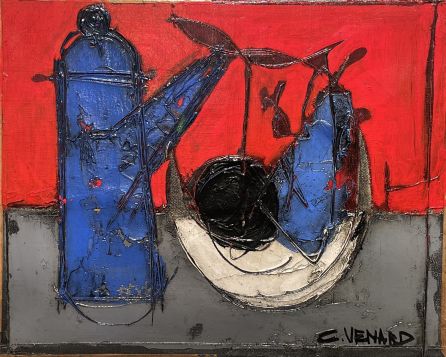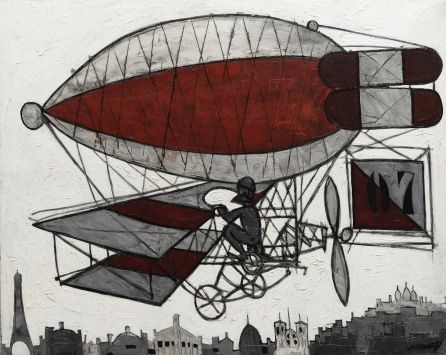To view works sold please leave your details and you will receive a notification shortly of how to access our online archive of sold works.
Venard
Claude Venard (1913-1999)
Claude Venard was a post-Cubist painter known for still-lifes, landscapes, and portraiture. Born in 1913 to a family from Burgogne, Venard began his artistic career at 17, when he began to attend evening painting classes. At 23 he became a restorer for the Louvre, which greatly benefitted his wider artistic education. Post World War II, Venard's work grew in recognition. His style is defined by rich impasto applied with a palette knife and strong geometric forms.
Venard became highly celebrated during his lifetime. Currently his work features in permanent collections at the Modern Art Museum in Paris, the Tate Gallery in London, the Metropolitan Museum of Art in New York, and the Tokyo Museum.

Claude Venard
Pendule et Verre

Claude Venard
Le Aeroship

Claude Venard
Blue et Rouge Still Life

Claude Venard
No. 7 Red Biplane

Claude Venard
The Bather

Claude Venard
le Dorade

Claude Venard
Biplane with Heart

Claude Venard
Nature Morte au Piano

Claude Venard
Nature Morte
Lorem ipsum dolor sit amet, consetetur sadipscing elitr, sed diam nonumy eirmod tempor invidunt ut labore et dolore magna aliquyam erat, sed diam voluptua. At vero eos et accusam et justo duo dolores et ea rebum. Stet clita kasd gubergren, no sea takimata sanctus est Lorem ipsum dolor sit amet. Lorem ipsum dolor sit amet, consetetur sadipscing elitr, sed diam nonumy eirmod tempor invidunt ut labore et dolore magna aliquyam erat, sed diam voluptua.
Sold Artworks









